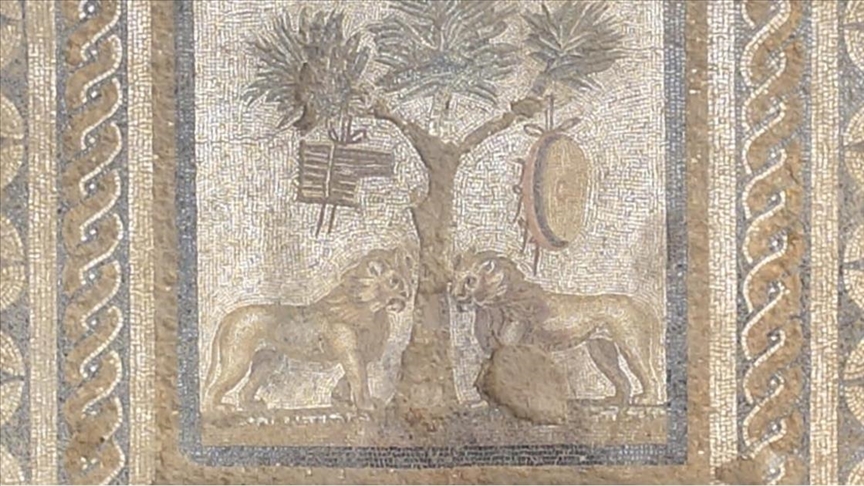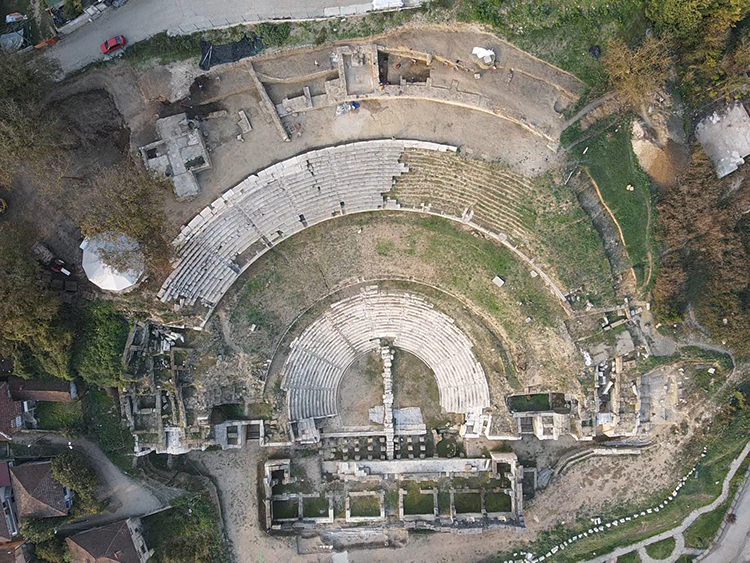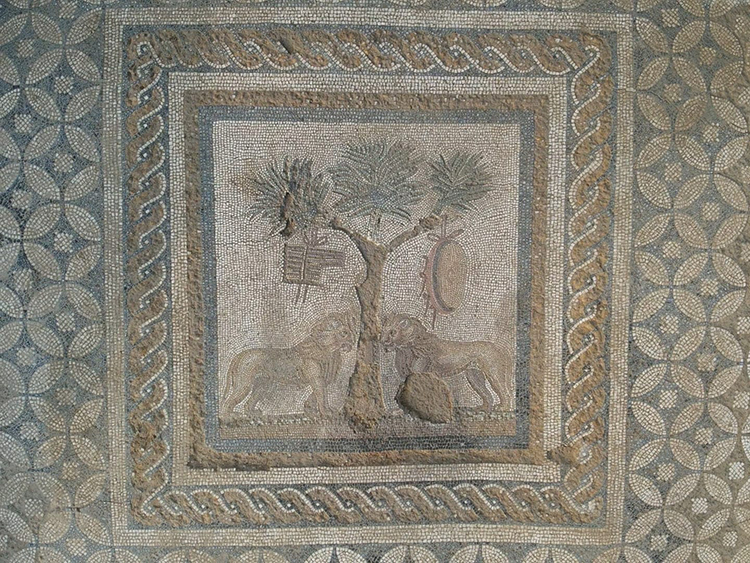
A lion mosaic reflecting the “Dionysus Cult Place” was found in the Ancient City of Prusias ad Hypium
A mosaic depicting the ‘Dionysus Cult Place’ was found in the ancient city of Prusias ad Hypium, known as the Ephesus of the Western Black Sea, located in the province of Düzce in the Western Black Sea Region of Turkey.
The excavation team working in the upper area of the theater of the ancient city discovered a mosaic with lions in a structure connected to a portico (an open gallery with a roof supported by columns).

Experts believe that the newly discovered mosaic room represents a cult area from the late Roman period, symbolizing a general way of life encompassing specific values, beliefs, traditions, art, and other cultural elements of a society or group.
The newly discovered structure, with approximate wall measurements of 4.51×6.42 meters, has inner walls covered with marble slabs over a thick layer of mortar. The room is rectangular in shape, oriented in a north-south direction.
📣 Our WhatsApp channel is now LIVE! Stay up-to-date with the latest news and updates, just click here to follow us on WhatsApp and never miss a thing!!

On the northern side of the room, a foundation for a platform towards the interior was observed. The entire room is covered with a mosaic floor made of finely crafted tesserae in white, blue, yellow, green, and brown colors.
Mosaic adorned with geometric patterns had its edges crafted in a larger and more colorful tesserae forming a frame. In the center, a square frame made of smaller tesserae depicts a scene.
Experts suggest that the depictions of drums and flutes found in this area, along with the items unearthed within the room, indicate that this space served as the “Dionysus Cult Place.”
Cover Photo: Ömer Ürer/AA
You may also like
- A 1700-year-old statue of Pan unearthed during the excavations at Polyeuktos in İstanbul
- The granary was found in the ancient city of Sebaste, founded by the first Roman emperor Augustus
- Donalar Kale Kapı Rock Tomb or Donalar Rock Tomb
- Theater emerges as works continue in ancient city of Perinthos
- Urartian King Argishti’s bronze shield revealed the name of an unknown country
- The religious center of Lycia, the ancient city of Letoon
- Who were the Luwians?
- A new study brings a fresh perspective on the Anatolian origin of the Indo-European languages
- Perhaps the oldest thermal treatment center in the world, which has been in continuous use for 2000 years -Basilica Therma Roman Bath or King’s Daughter-
- The largest synagogue of the ancient world, located in the ancient city of Sardis, is being restored











Leave a Reply